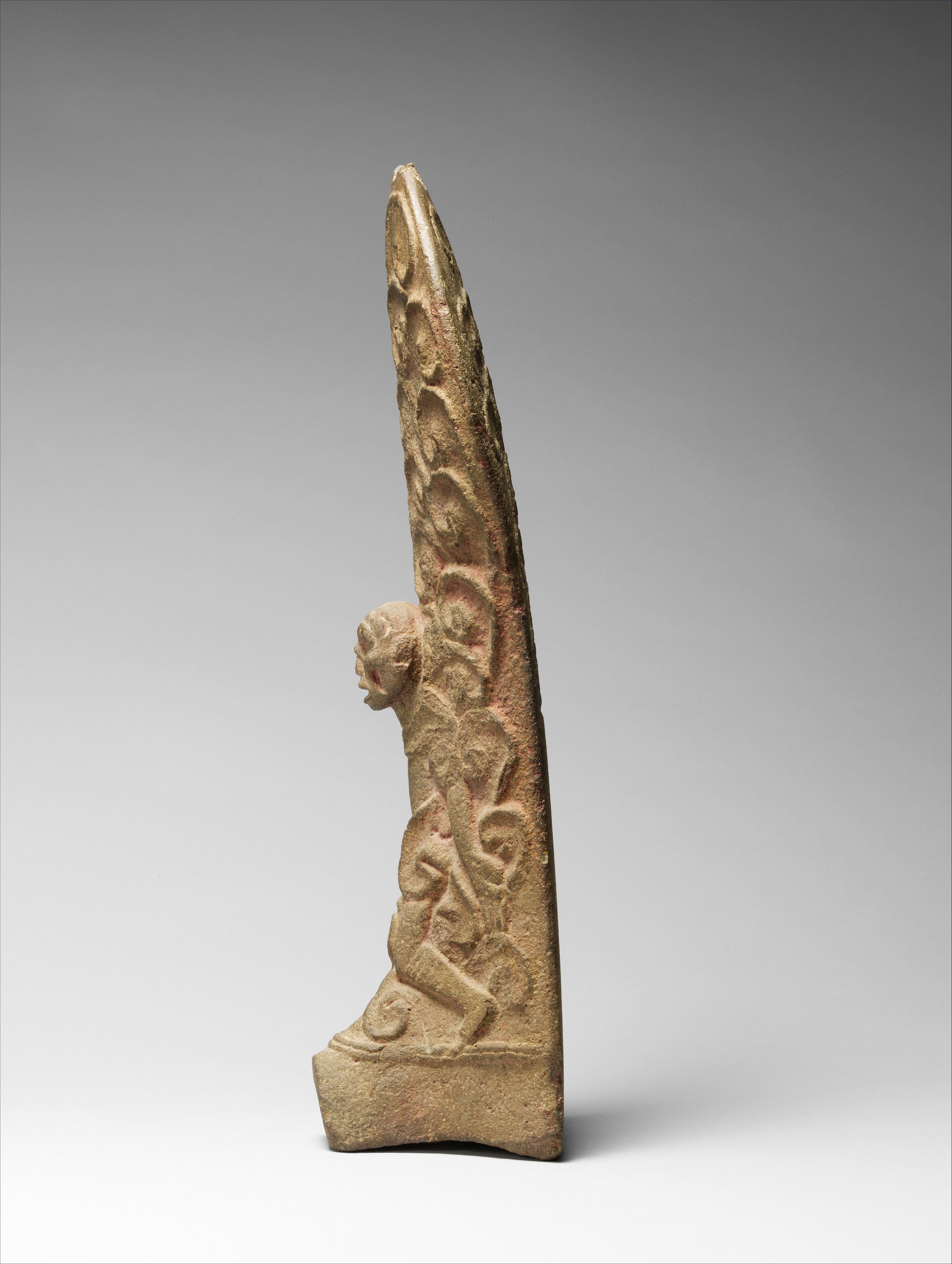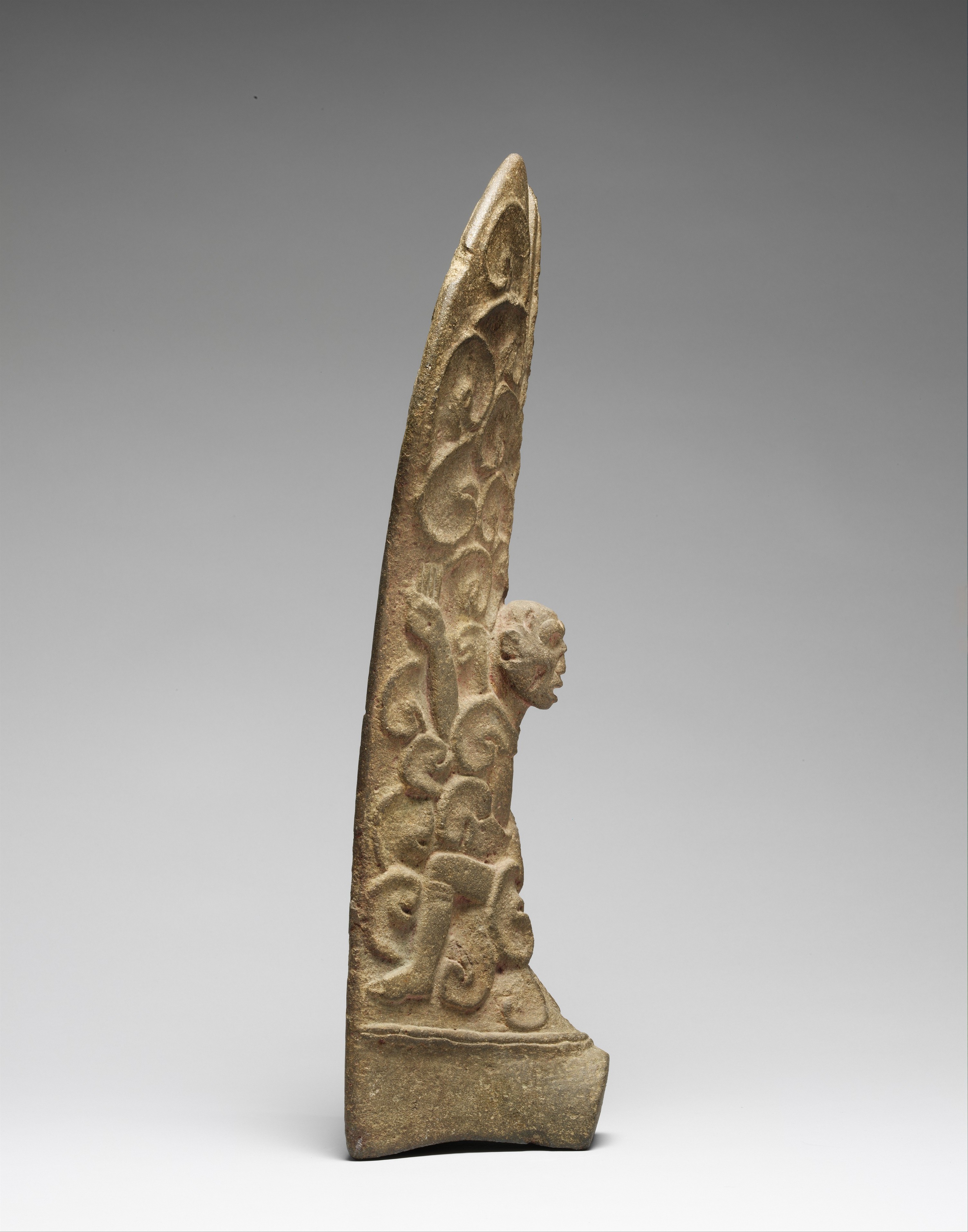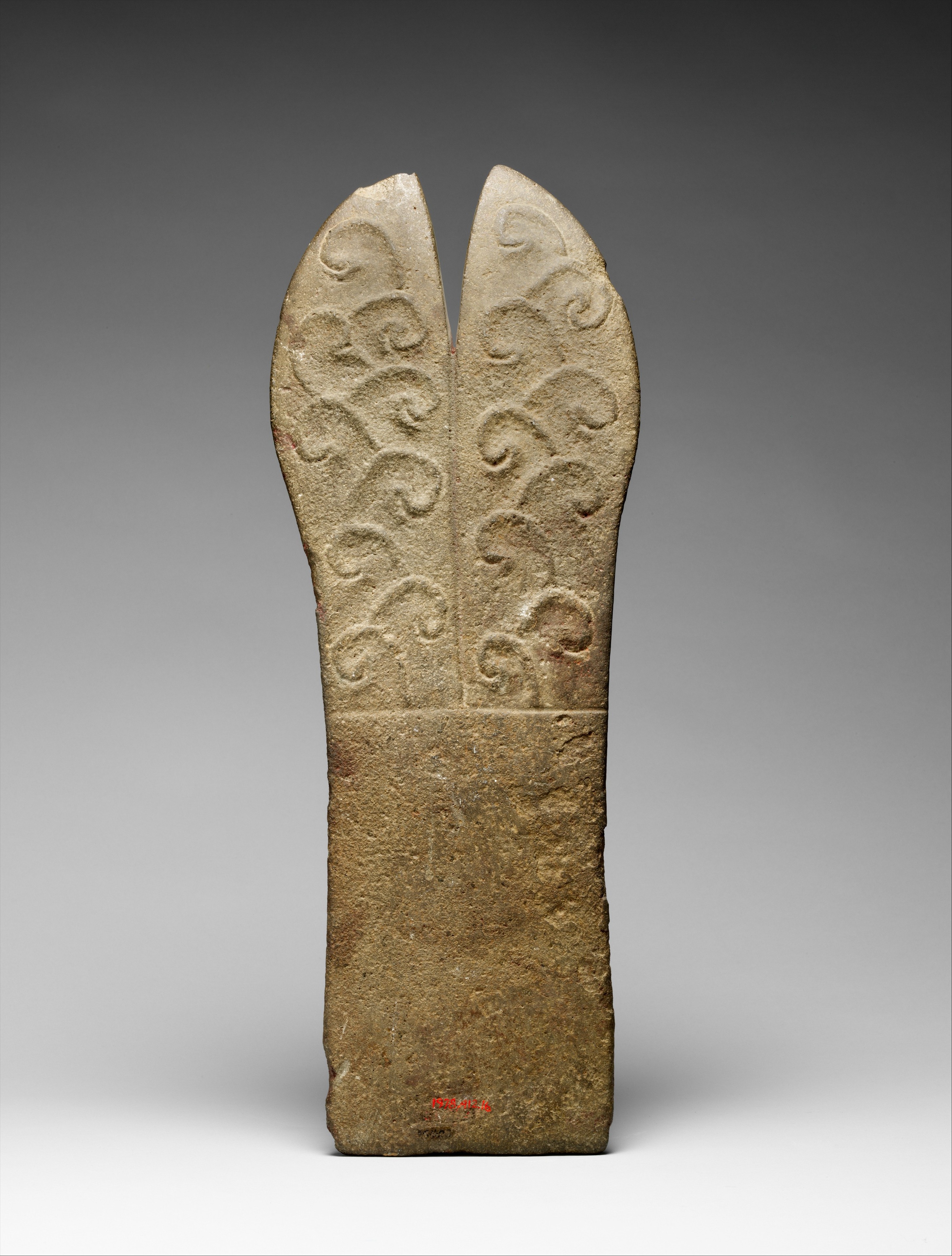Palma with Figure
Not on view
Palmas, named for their palm frond shape, were one element of the elaborate regalia worn by Mesoamerican ballplayers. Resting atop the yoke worn around the player’s hips, they extended up the middle of the ballplayer's chest to protect major organs from the impact of the hard rubber ball used in the game. While hachas are more widely distributed in Mesoamerica, palmas appear to have been a Veracruz innovation. Ballplayers wearing palmas are depicted on the relief sculptures of El Tajín, the largest city in classic-period Veracruz.
In sculpting this palma, the artist has combined low and high relief to depict a human figure surrounded and overlapped by a pattern of scrolls. These are loosely drawn, breaking with the regularity usually found in the sculpted or drawn double-edges scrolls common in Classic Veracruz art and may represent blood or vines (see also MMA 1979.206.423). They swirl around the central figure, whose legs and arms appear to be moving in a clockwise motion of their own. The figure’s skull-like head contrasts with its animated body, moving between life and death. The skull, rendered in high relief, together with the outward curve of the palma itself pushes into real space, and engages the viewer with its direct gaze.
Ballgame-related images from Veracruz depict the blood of sacrificial victims in the process of transformation from the blood of death into living vines. Bursting forth from the chest of a sacrificial victim, the blood offering to the deities is believed to return as the gift of fertility and rebirth. In this palma’s image, the figure’s bare skull signifies death while, in contrast, its intense gaze and active stance suggest the renewal of life.
Patricia Joan Sarro, 2017
Published references
Art of Oceania, Africa, and the Americas from the Museum of Primitive Art. New York: The Metropolitan Museum of Art, 1969, fig. 582.
The Metropolitan Museum of Art. Vol. 12, The Pacific Islands, Africa, and the Americas. New York: The Metropolitan Museum of Art, 1989, fig. 85.
Additional reading
Ceremonial Sculpture of Ancient Veracruz. New York: Long Island University, 1987.
Earley, Caitlin C. "The Mesoamerican Ballgame." In The Hilbrunn Timeline of Art History. New York: The Metropolitan Museum of Art, 2000–. http://www.metmuseum.org/toah/hd/mball/hd_mball.htm (June 2017)
Hellmuth, Nicholas. The Escuintla Hoards. FLAAR Progress reports 1:2/1975.
Koontz, Rex. Lightning Gods and Feathered Serpents: The Public Sculpture of El Tajín. Austin: University of Texas Press, 2009.
Leyenaar, Ted J.J. Ulama, Jeu de Balle des Olmeques aux Azteques — Ballgame, from the Olmecs to the Aztecs. Lausanne: Musée Olympique, 1997.
Newton, Douglas. Masterpieces of Primitive Art: The Nelson A. Rockefeller Collection. New York: Alfred A. Knopf, 1978.
Scott, John F. "Dressed to Kill: Stone Regalia of the Mesoamerican Ballgame". In The Sport of Life and Death, The Mesoamerican Ballgame, E. Michael Whittington, ed, pp. 50–63. New York: Thames and Hudson, 2001.
Shook, Edwin M. and Elayne Marquis. Secrets in Stone: Yokes, Hachas and Palmas from Southern Mesoamerica. Philadelphia: American Philosophical Society, 1996.
Wilkerson, S. Jeffrey K. "And Then They Were Sacrificed". In The Mesoamerican Ballgame. Vernon L. Scarborough and David R. Wilcox, eds, pp.45–72. Tucson: University of Arizona Press, 1991.
Due to rights restrictions, this image cannot be enlarged, viewed at full screen, or downloaded.
This artwork is meant to be viewed from right to left. Scroll left to view more.





